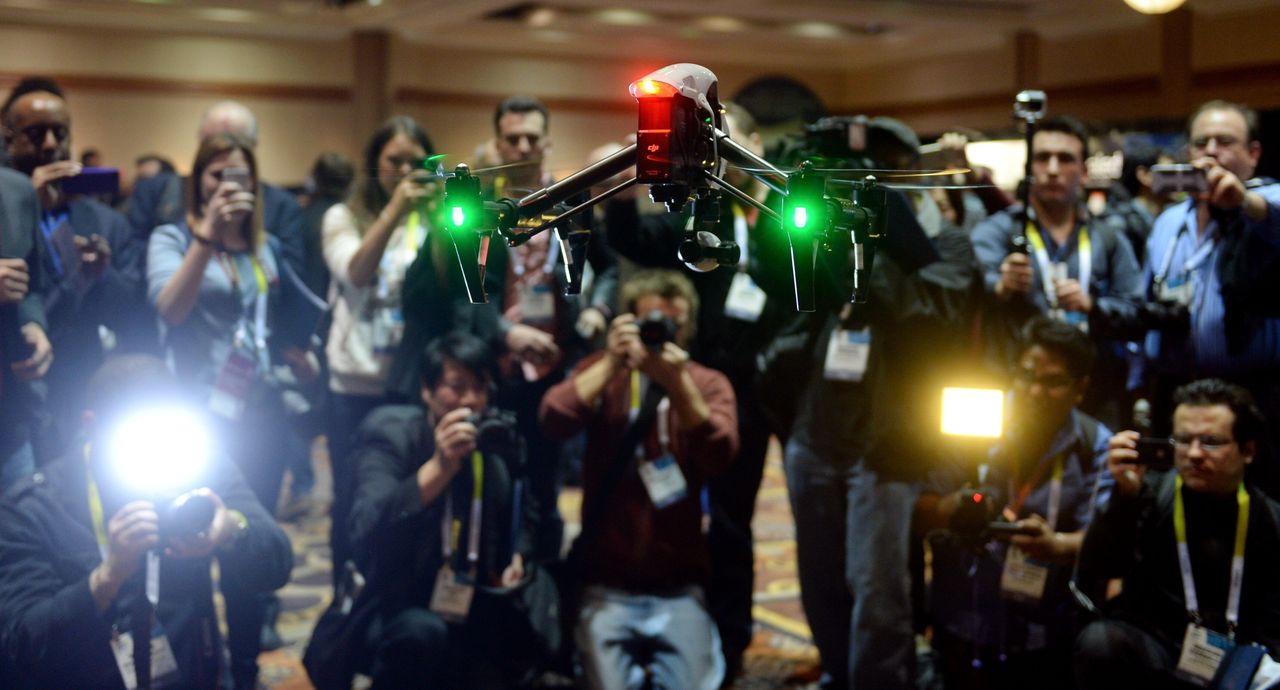CES 2015 is underway in Las Vegas. But as Tech Editor Michael Rundle finds out, the best idea at the show might not be a Bluetooth Belt or a pair of rocket skates - it might just be to stay human amid the madness.
“We have an obligation…” Gary Shapiro, CEO and president of the Consumer Electronics Association (which runs the CES show in Las Vegas), tells me. “We have an obligation as humans, to stay human.”
If you have ever experienced CES Unveiled, the pre-show before the pre-show of the first (and biggest) tech news event of the year, at which Shapiro and I are meeting, you can see why he might have to make the statement.
This is tech, in meat space. It’s crowded, loud and cramped. There are 100 companies pitching odd, unusual and occasionally insane products to thousands of journalists, and it smells of shrimp and spilled beer.
“People don’t have to come here,” Sharpiro said. “They could do a lot of this online… But we want to have the five sense experience of an event. We want to have the benefit and value of real serendipity, both with technology and products and with other humans.”
To that end, we are stood in a small, Pacific Ocean-themed conference room, deep in the windowless bowels of the Mandalay Bay casino, resort and nightmare factory, Nevada.
It is filled to the brim with PR agents, bloggers and small, conveniently free bars. There are drones hovering above clouds of shoving video crews. An American journalist is loudly enthusing to a colleague about a belt which can loosen itself — as if that is anything other than utterly horrifying. A few feet away there is a giant picture of a baby wearing a huge, sticky, app-connected temperature monitor. A German cameraman is furious with me for blocking his view of a brainwave machine. I have just knocked over a pair of rocket skates.
“Everyone here is looking for the future,” says a British tech reporter, from deep in a scrum around a Bluetooth baby bottle. “But they’re in the wrong f**king place.”
'Humanity' is perhaps not the strong point of CES Unveiled.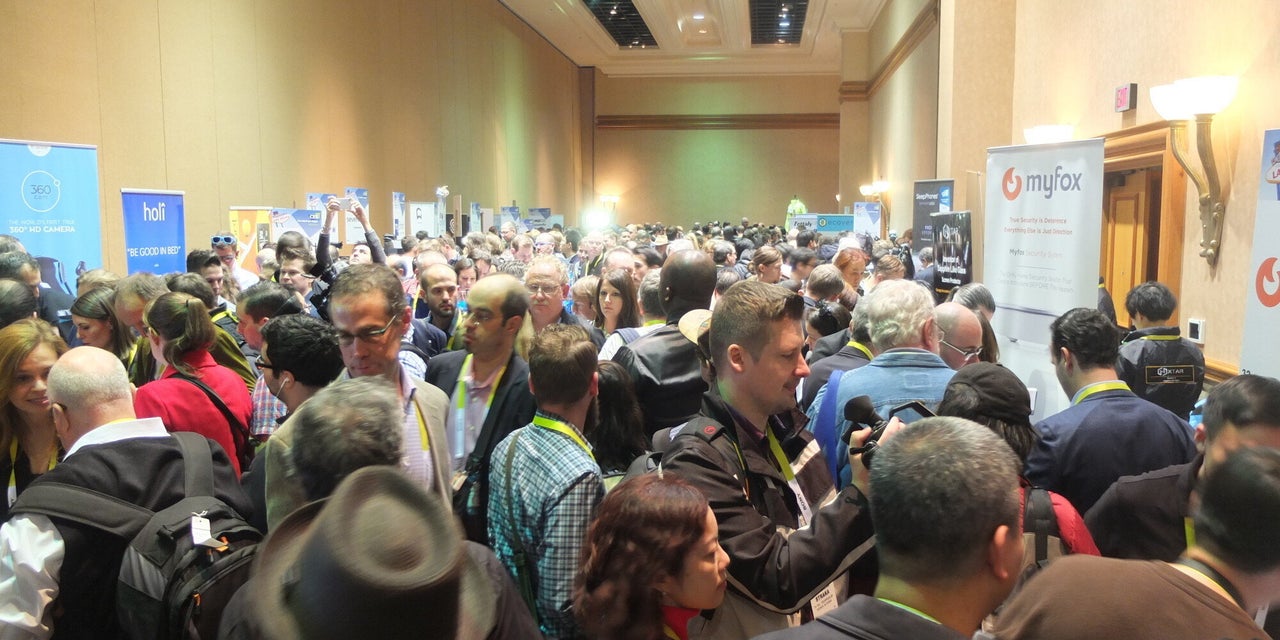
And for journalists, the appeal of Unveiled is obvious. It gives us a chance to get a sense of the ‘tone’ of the show a day early, without having to traipse around three enormous conference centers dominated by routers and hard drives. Unveiled is also known for highlighting strange and bizarre products which to be frank are easy to make fun of, are good for website traffic and don’t require much follow-up, since many of them will never be released on any sort of major scale.
So if you’re wondering why early CES coverage tends to be dominated by oddities with novelty appeal and only a slight chance of a commercial future - say, a Smart Fork (2013), a Bluetooth Toothbrush (2014) and a self-tightening robot leash (2015, below) - the reason is CES Unveiled.
For CEA’s Gary Shapiro, the pre-show is about helping companies to stand out from the crowd. “It takes a phenomenal product, or a service that’s creative, and it takes a lot of work before the show,” he says about what it takes to get noticed here. “And it takes some staying power, for four days, to stay fresh and respond to people.”
Indeed, many of the smaller companies at Unveiled are start-ups who paid just $1,000 to show their wares with 350 others at CES Eureka Park this year, a programme designed to highlight new ideas and innovations.
“We believe that the whole show is for the start-ups… we always have to keep this just so the smallest person with an idea can expose it to journalists, retailers and partners,” he says.
These companies are from all sides of the consumer tech world, covering areas like health, parenting, fitness and safety as well as the more usual mainstays of tech like gaming, productivity and smartphones.
“You stand out by answering that genuine concern of complexity… The companies here tonight that I’ve walked around and seen that are selling that idea - this works right outside the box.”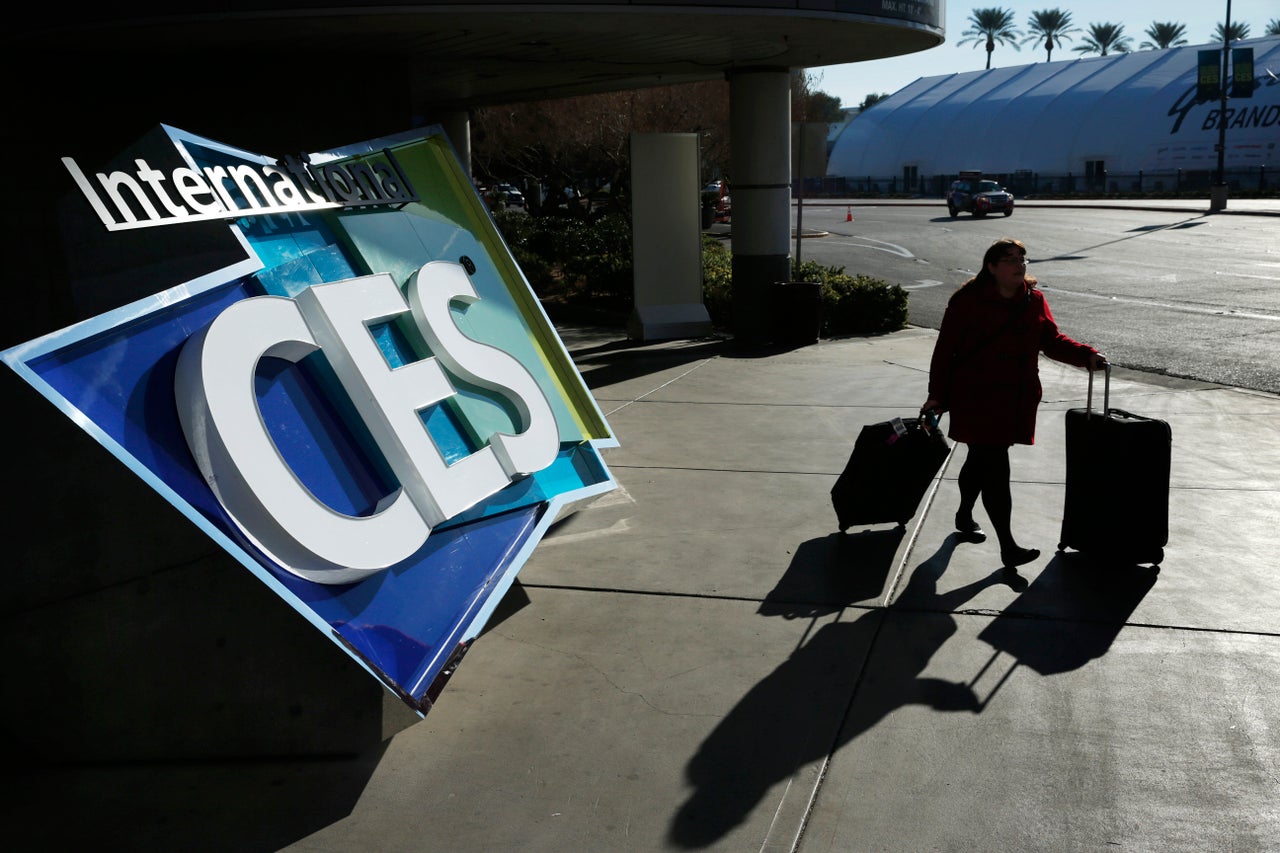
One stand has a banner splashed with the optimistic/threatening slogan “Never Carry A Wallet Again!”, while another pitches a Bluetooth ring with which you can control your digital devices as if by magic, except you’re wearing a piece of jewelery the size of a Party Ring and you look like a moron.
Things get more intense when it becomes clear most of the really ridiculous gadgets at this year’s show are located inside a fifteen-foot wide corridor with no exit at one end of the room, such that journalists pile in en masse but cannot actually leave. The only sign that anyone is still living at the other end are the bobbing selfie sticks and GoPro wands - of which there are about a thousand.
Here things get good.
We meet the SleepPhones (”a comfortable fleece headband with five embedded speakers”), which are headphones designed to wear when you are unconscious. There is a baby bottle designed to sync with your phone (“It’s to reassure parents, at what point the baby drank, if it drank well, if there were lumps…”). One British team shows off a cycling jacket with flashing, ‘smart’ LED lights, and another has a coffee machine with a WiFi connection.
One of the biggest throngs is crowded around the Affix Rollkers, a prototype set of electric “rocket skates” (pictured below), which are designed to augment your natural walking motion and drive you forward at around seven miles an hour.
“You can go up hills, you can go down really steep hills, it has an auto brake,” says Christian Pineau of Affix Rollkers.
Why are they better than roller skates, though?
“There is no effort. Skates you have to push.”
Sure.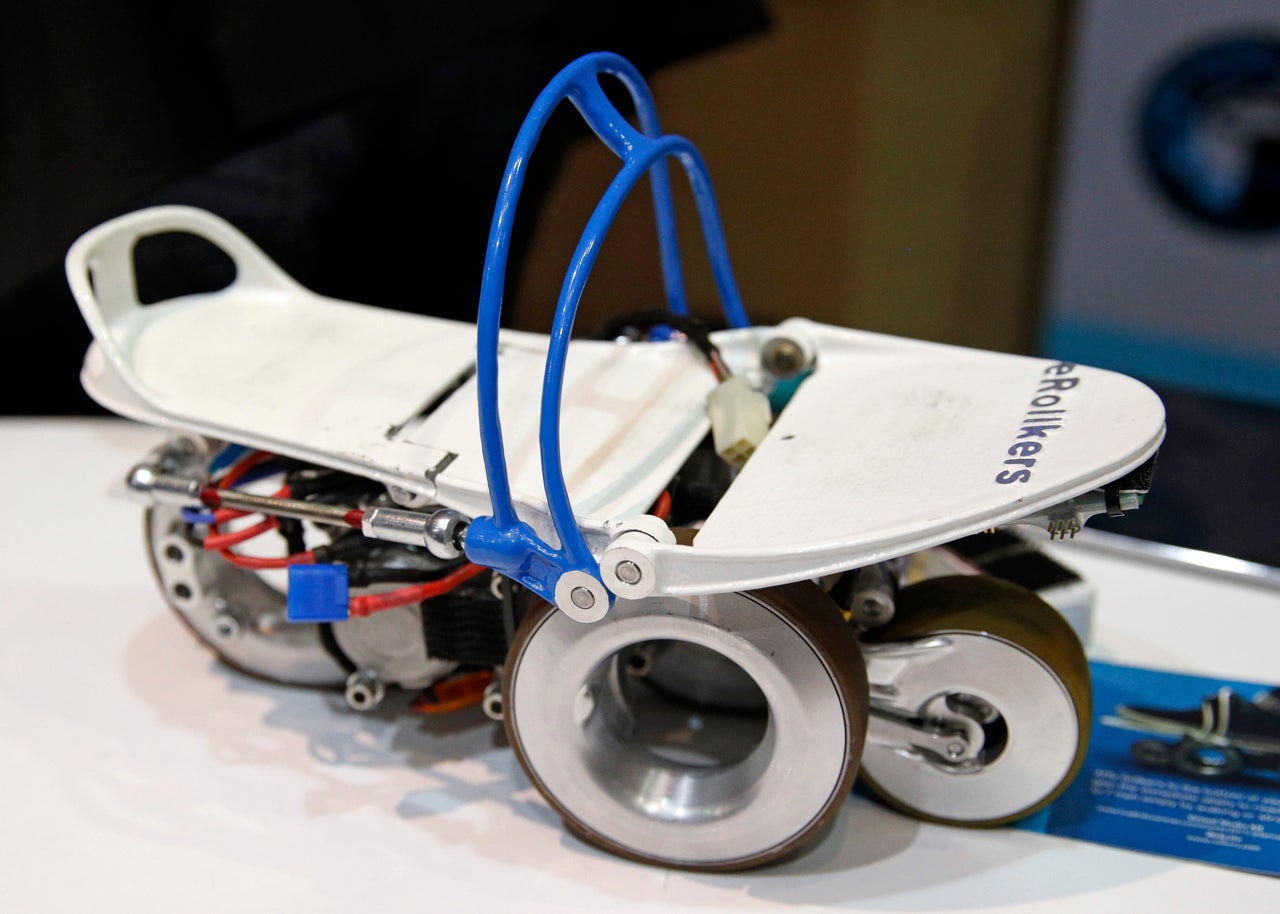
Virtually next door we meet the Melomind, a brain measuring device which aims to enable users to learn to meditate and relax, but which it turns out is unable to detect my own specific brain. This is not relaxing, but the device seems well-intentioned enough.
There is the belt which tightens itself, the bike pedal that knows it is being stolen and a WiFi gas bottle which tells you when it’s empty. There is a bulb that can teach you to sleep and a sleep monitor for your entire family, so you can tell if your teenagers are sneaking out at night.
It’s around this time that the concept of a digital detox starts to sound really attractive.
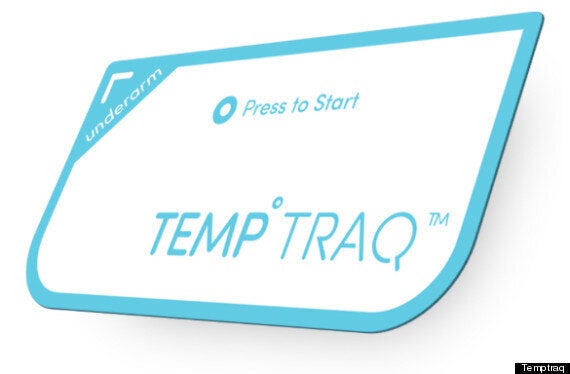
But perhaps the biggest problem with CES Unveiled is that all the madness and wacky visions of the future on show have a tendency to get in the way of something genuinely important.
IE, sometimes these products are genuinely good.
Take the Temp Traq, also known as the wearable device for babies that I made fun of earlier in this article.
Described in that way, the idea sounds ridiculous - and the stand itself at first seemed to fit neatly into the CES Unveiled narrative, dominated as it was by an enormous photo of a baby with a large, sticking-plaster style gadget affixed to its skin. Let’s face it, it would not be difficult to write a sardonic blog post about this product, or include it in a glib “strangest CES ideas” round-up. And so it was that I approached Jon Eager, director of product marketing at Blue Spark Technologies (who make Temp Traq), for an interview with one eyebrow already raised.
So what does it do?
“If you have a child that has a fever, you can apply it under the arm and for 24 hours record the temperature every ten seconds to a smartdevice using Bluetooth Low Energy.”
Surely that’s ridiculous, I asked, barely listening to what he was saying.
“Well let’s say if your doctor says ‘if your child’s temperature goes above 104, call me’. This will alert you on your smartphone.”
Hm. Well, actually that sounds really reasonable.
“There’s a lot of technology that doesn’t really solve a problem,” Eager says. “This is a medical device… This is essentially a large electronic bandaid.”
And then it hits me: this isn’t rubbish.
“I’ll give you an example," Eager goes on. "There is a family we were put in touch with whose son has mitochondrial disease. Essentially this nine-year-old boy, one of his parents has to sleep with him and monitor his temperature 24 hours a day. His body can’t regulate temperature. We sent them patches for a week and they had continuous data. Then one day they saw his temperature start to move up, the TempTraq alerted them, they called their doctor and two hours later they saw symptoms of pink eye. We think there are some fantastic uses for this.”
Finding the TempTraq at the end of CES Unveiled was something of a revelation after two hours of solid insanity. It might not change the world, but it probably will make it a little bit better - and that’s worth my time to know about.
And ultimately, it proves that CEA’s Gary Shapiro is right - finding good ideas, and understanding them takes more than reading a press release or making fun of an easy target. It involves talking to people, listening, and considering the implications of a good idea. It takes a show like CES, and an event like CES Unveiled.
So no, this might not be a one-stop-shop for a blueprint for the future. But if you can take Shapiro’s advice, and “stay human” at CES, you might find that it is a pretty decent place to find a neat idea. And that’s surely what CES is all about in the first place.
